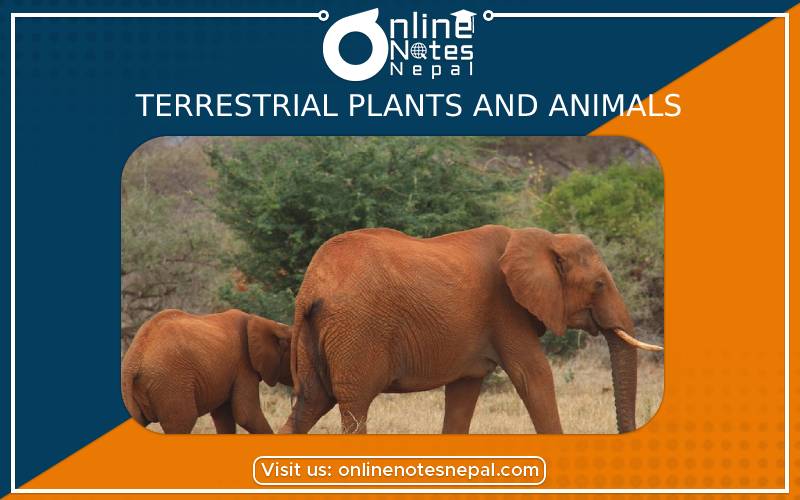Published by: Nuru
Published date: 17 Jan 2022

The plant which lives on land are called terrestrial plants. On the basis of physical conditions, the terrestrial plants are divided into two types. They are:
Mesophytes are those plants which grow on average and moisture temperature. Examples of these plants are mustard, wheat, mango etc.
Adaptational characteristic of mesophytes are as follows:
Xerophytes are those plants which are grown in dry and hot habitat. They are also called desert plants e.g. Opuntia, cactus, Aloe etc.
Adaptational characters of xerophytes are as follows:
The animals, which live on land and do their biological activities on land, are called terrestrial animals.
On the basis of their mode of life, terrestrial animals are divided into following types:
1. Cursorial Animals:
Cursorial animals are those animals which live in open places and are adapted to run on hard ground e.g. lion, deer, horse etc. Adaptational characters of them are as follows:
The body is streamlined which helps them for swift movement.
The limbs are long and strong.
Locomotion is digitigrade.
2. Fossorial Animals:
Fossorial animals are those animals which are adapted for burrowing mode of life e.g. rabbit, rat, etc. The adaptational characters of them are as follows:
The head is small and tapers anteriorly to form snout for digging.
The forelimbs are short with powerful claws.
The eyes and the ears are small.
3. Arboreal animals:
They are those animals which are adapted for climbing e.g. squirrel, chameleon, etc.
The adaptational characters of these animals are as follows:
4. Aerial Animals:
The animals that are adapted for aerial mode of life are called aerial animals. The adaptational characters of aerial animals are as follows:
5. Desert Animals:
Desert animals are adapted for dry land and hot habitat e.g. camel, lizard, rodents etc. The adaptational characteristics of desert animals are as follows: